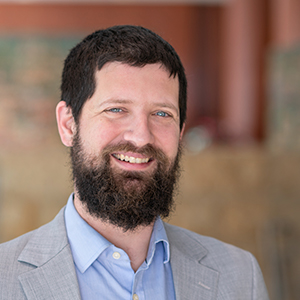Leaders in rural areas across the nation are finding innovative ways to address their communities’ child care needs. In late 2022, the Federal Reserve Bank of Minneapolis co-produced “Rural Communities Building Their Own Child Care Solutions,” a webinar highlighting three creative approaches to rural child care challenges. Minneapolis Fed staff presented the webinar with partners from the Federal Reserve Bank of San Francisco and four federal agencies: the Administration for Children and Families, the Economic Development Administration, the Employment and Training Administration, and the Department of Agriculture’s Rural Development Innovation Center.
Vaughn Zenko, one of the presenters, lives in Baker, Montana, a town of about 1,800 residents. Baker is located in an eastern area of the state where people are few and far enough between for it to be considered not just rural but frontier. Zenko is the executive director of the Eastern Plains Economic Development Association.
Surveys and licensing data show that finding child care is a challenge for parents all across Montana; for example, there’s only one licensed child care spot in Montana for every three children under the age of six. Zenko often talks about how he recognized the shortage of child care in his own region during the last Fallon County Fair. The event brings in a lot of customers for businesses in Baker. But Zenko saw shops and restaurants reduce their hours and even close during the 2022 fair, which meant they missed out on the influx of customers.
Employers told him they couldn’t find workers to staff their businesses. Inspired to look at state and federal workforce data, Zenko found that labor force participation in his region was lower than in Montana as a whole—particularly among women but among men, too. For Zenko, you can’t separate this issue from the fact that Baker is within a three-county bloc the size of New Jersey that doesn’t have a single licensed child care center.
“There were a lot of issues that could be solved with just some affordable child care,” he said. “So we really dove in and tried to tackle this project.”
Zenko’s passion and his attention to data reflect two of the most important ingredients for building child care capacity in rural communities, according to presenter Lori Capouch. “Data can be really powerful,” she said. “But getting people on board can be the hardest part—especially finding risk takers and early adopters.”
Capouch would know. In her role as a rural development director for the North Dakota Association of Rural Electric Cooperatives, she’s helped groups boost their communities’ child care capacity using employer-supported cooperatives.
In employer-supported cooperatives, a group of employers, parents, and other community members forms or assists a nonprofit that owns and operates a child care business. Each partner brings something to the effort. Employers can play a wide range of roles, from providing space for a facility to offering back-end supports like accounting services.
An energized coalition of partners will ultimately only get as far as its financing allows. Mark Evans is a community bank president at First Interstate Bank, which has a footprint that stretches across the western half of the United States. On the webinar, he explained how First Interstate worked on a child care project with the Northern Arapaho Tribe, located on the Wind River Reservation in west-central Wyoming; and MoFi, a community development financial institution based in Missoula, Montana.
The project addressed two big community needs identified by the tribe: increasing capacity at an existing health clinic and creating a child care center to serve the community. The new child care center on the reservation offers jobs that pay well by local standards, said Evans, and also stays open during non-standard hours to provide care for employees at the tribe’s casino.
Like the other practitioners on the webinar, Evans noted that a wide range of community partners were involved in making the center a reality. That included local child care providers. Rather than seeing the new center as competition, a local child care operator consulted on the Wind River project to help with its design and launch.
“I thought that was really amazing to show the community involvement,” said Evans. “It shows how rural America works.”
In Montana, Zenko dug into the child care issue and began working with his county’s elected officials. Resources from the Zero to Five Montana organization enabled him to bring in the expertise necessary to design a building that would meet several community needs at once. The facility, to be built on county-owned land and partially financed by a public bond, would feature a child care center, a community gathering place, and a space for medical providers.
A big step in this approach was a vote on Election Day, which fell after our webinar, for the bond to finance the construction. But voters in Fallon County rejected the proposal. “It was a bad year for bonds in Montana,” Zenko later said. “Out of 26 bond votes across the state, only three succeeded.”
Zenko is undeterred. “One of our goals was always to generate interest in child care,” he said—and the interest generated by the bond referendum has already borne returns. Zenko is now in conversations with his region’s Head Start administrators to launch an early childhood program in his area. He’s also heard from locals willing to donate significant assets to the child care effort.
Baker isn’t the only rural community that has faced hurdles in building its child care capacity. Capouch shared anecdotes of the struggles child care co-ops have faced in North Dakota. But once a community comes together, she said, things can move quickly.
“It only took us six months to get off the ground,” she said of one child care co-op effort. “Communities have personalities. If you work with those, you can make it happen.”
Zenko and Evans agreed. “It doesn’t take a large group of people,” Evans said. “A small group of people in a small community can get a big project done.”





